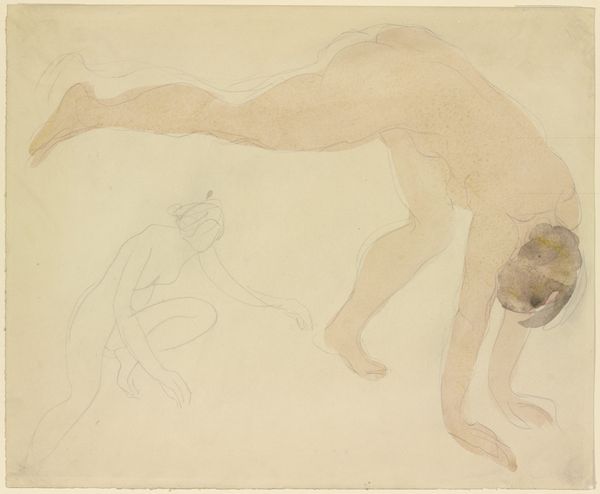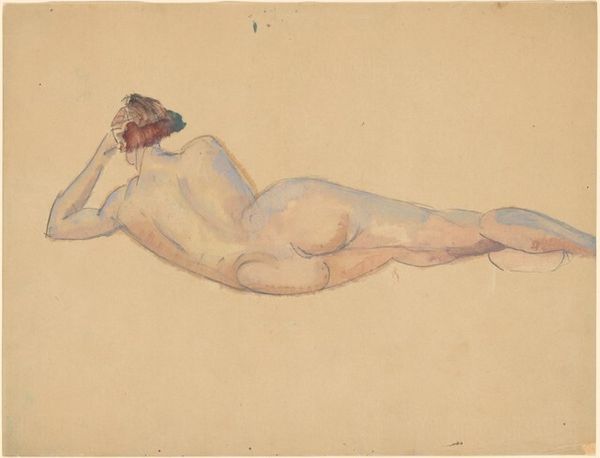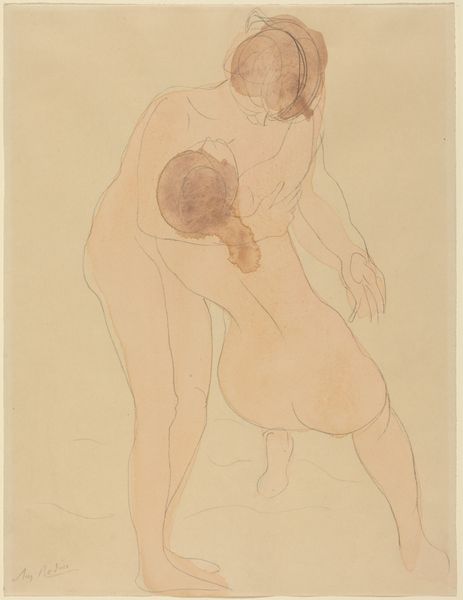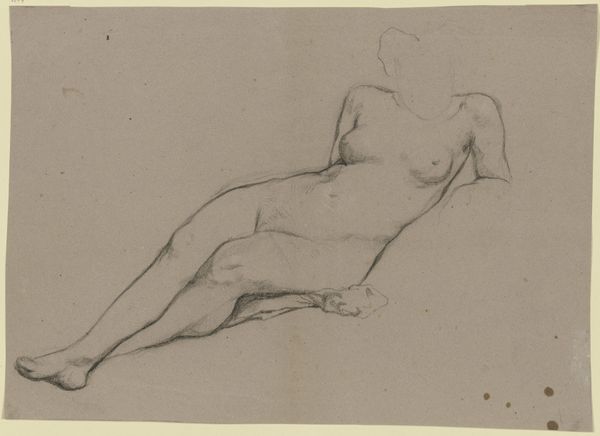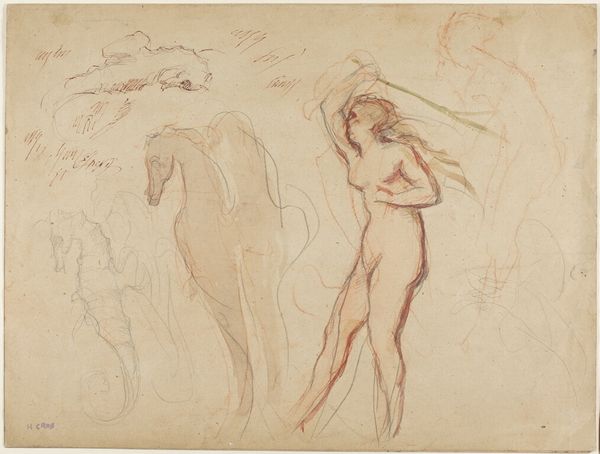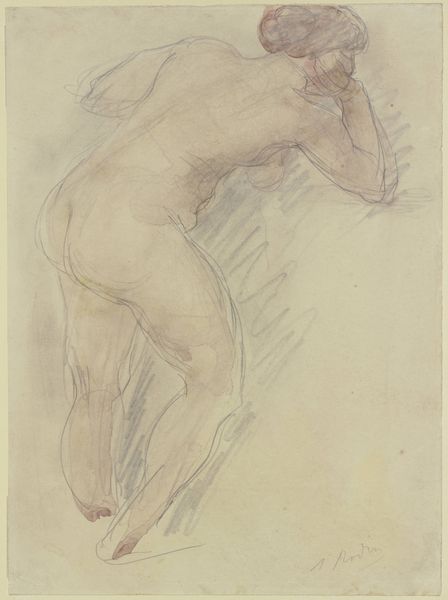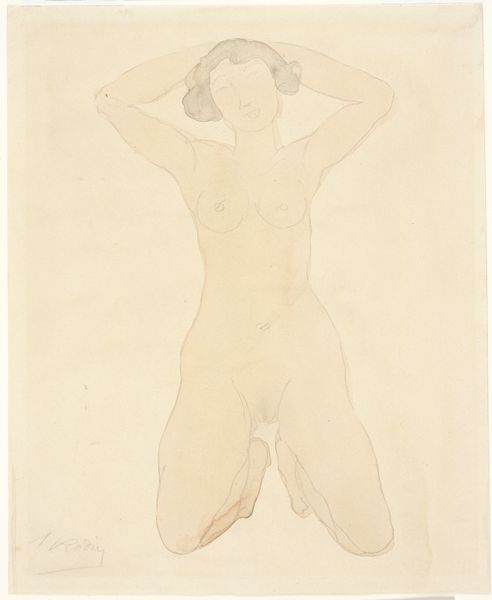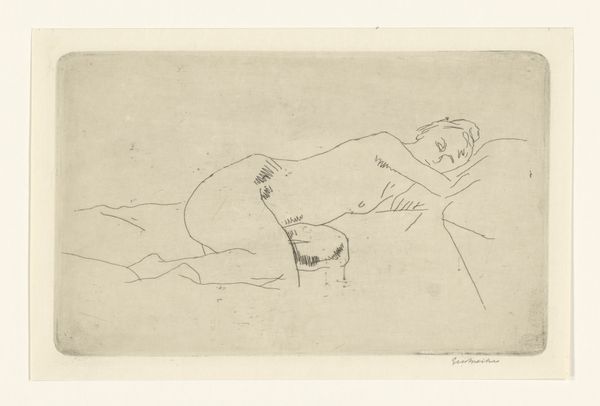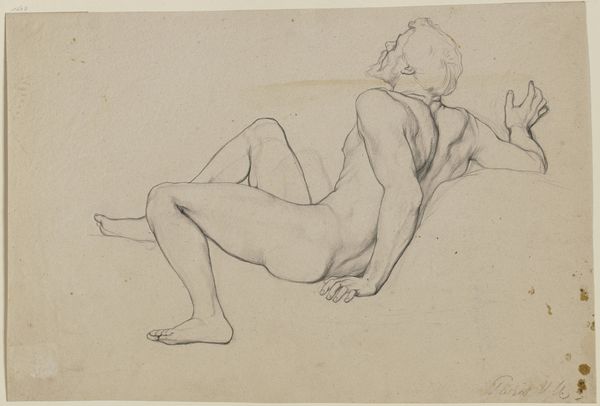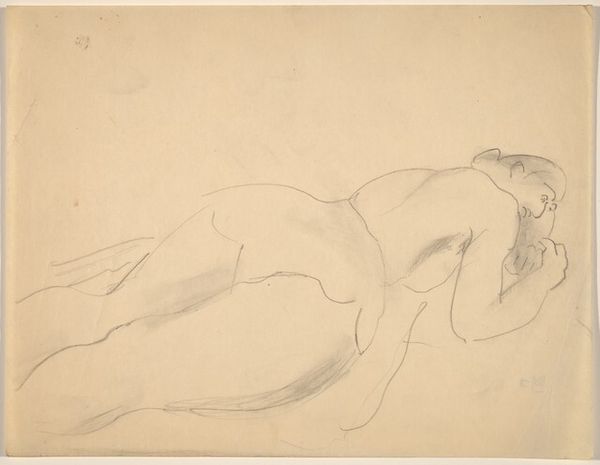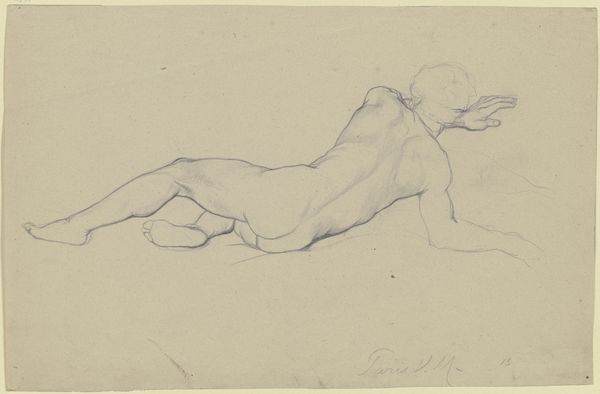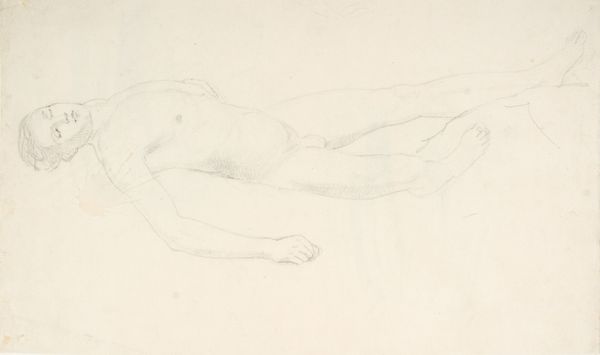
drawing
#
drawing
#
amateur sketch
#
toned paper
#
light pencil work
#
pencil sketch
#
incomplete sketchy
#
possibly oil pastel
#
ink drawing experimentation
#
underpainting
#
watercolour illustration
#
watercolor
Dimensions: overall: 35.8 x 26.2 cm (14 1/8 x 10 5/16 in.)
Copyright: National Gallery of Art: CC0 1.0
Editor: So, this is "Studies of Nude Dancers" by Odilon Roche, made sometime between 1918 and 1947. It looks like it’s a drawing, maybe watercolor, on toned paper. It's interesting how the figures seem to be floating, almost weightless. What’s your take on this piece? Curator: I find the sketch-like quality compelling. These 'Studies' were produced in a period deeply scarred by global conflict. Consider how Roche utilizes the nude form here, not as a celebration of idealized beauty, but perhaps as a raw, vulnerable expression of the human condition in a world ravaged by violence. Does that initial feeling of "weightlessness" still hold up if we consider it not as freedom but fragility? Editor: That’s a great point. I was initially focused on the aesthetic, but I didn't think about the historical context shaping its message. Does the incompleteness of the sketches tie into that vulnerability, then? Curator: Precisely. The unfinished quality challenges traditional notions of art historical ‘finish’ as representative of status and accomplishment, echoing feminist critiques of a patriarchal art world which emphasizes mastery. This piece subverts that. Where do you think this lands within contemporary discourse on the nude figure? Editor: Well, the female body has become a site of empowerment for many artists, moving away from passive objectification, and the 'incomplete' quality can underscore the importance of resisting limiting expectations that can become oppressive. Curator: Absolutely! It also prompts us to think about what it means to see, who gets to look, and how power dynamics inform representation. Editor: That's fascinating. I'm going to have to rethink my initial impressions and explore the artist more to dig into these intersectional themes. Curator: And I am struck anew with the realization of how historical trauma can resonate so deeply even within seemingly simple forms. Art history offers itself up as an active voice in broader societal and ideological conflicts.
Comments
No comments
Be the first to comment and join the conversation on the ultimate creative platform.
